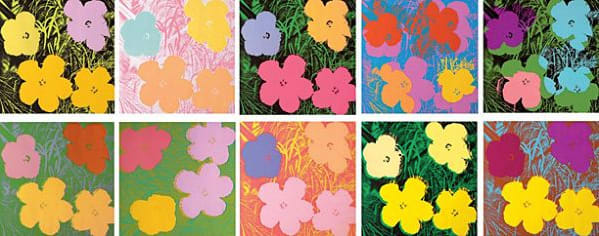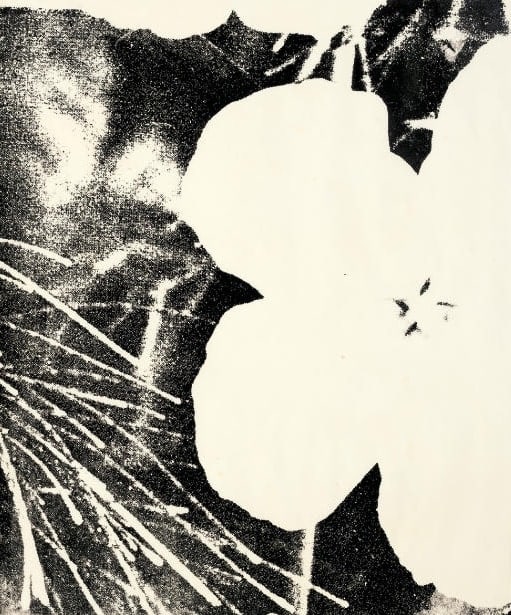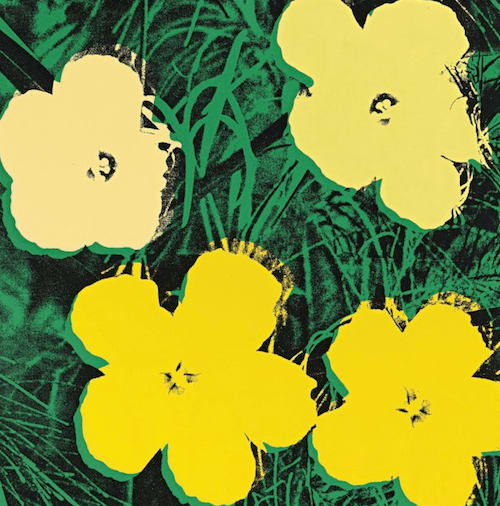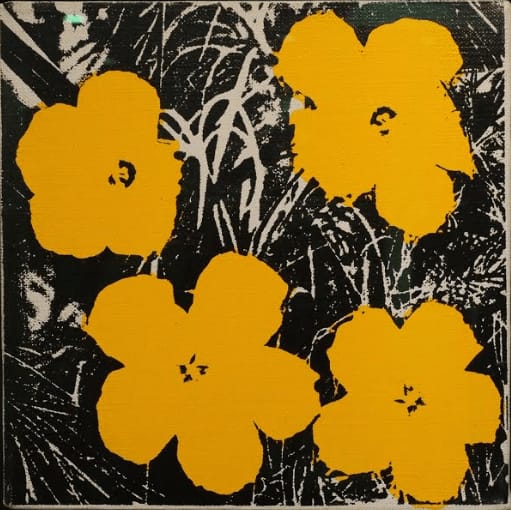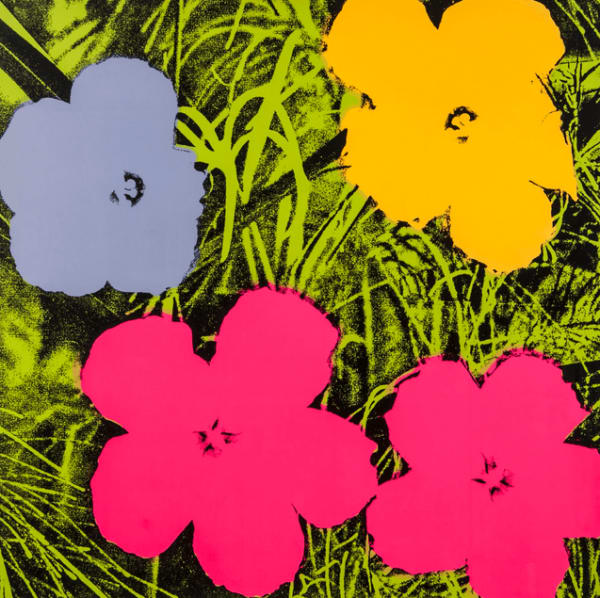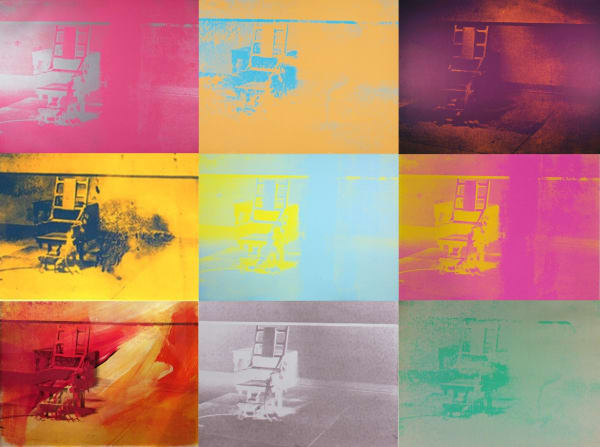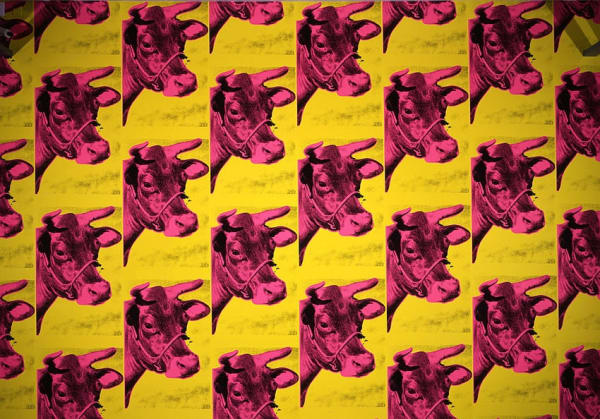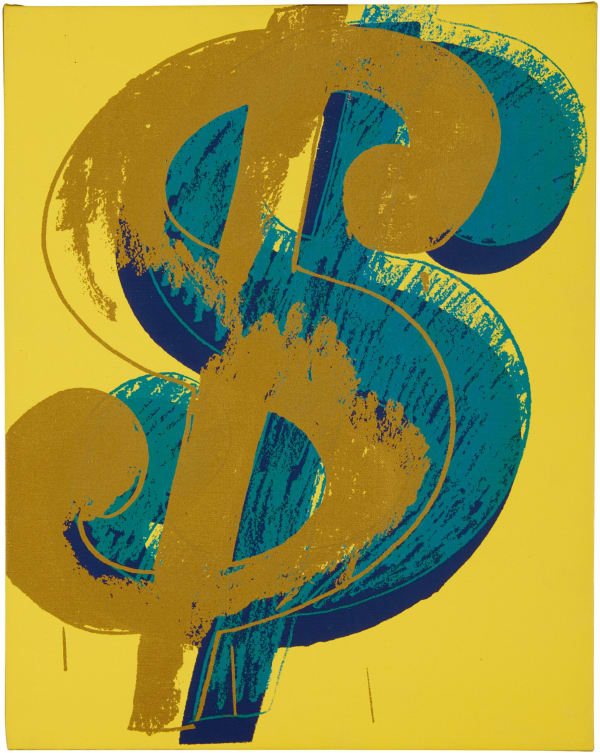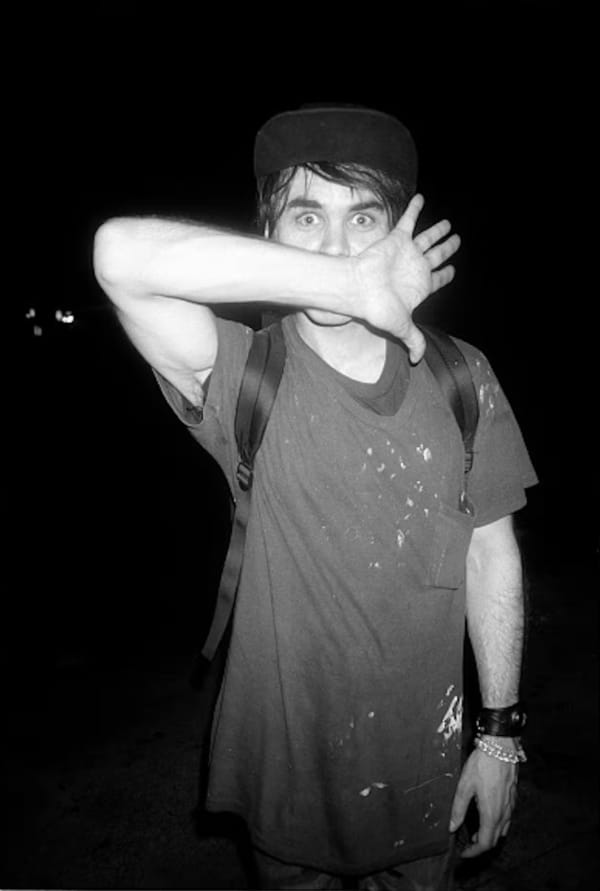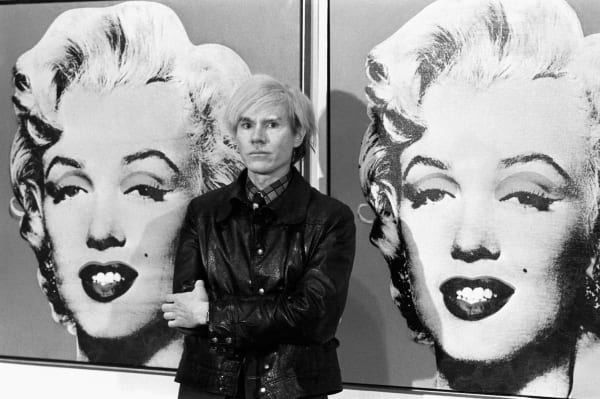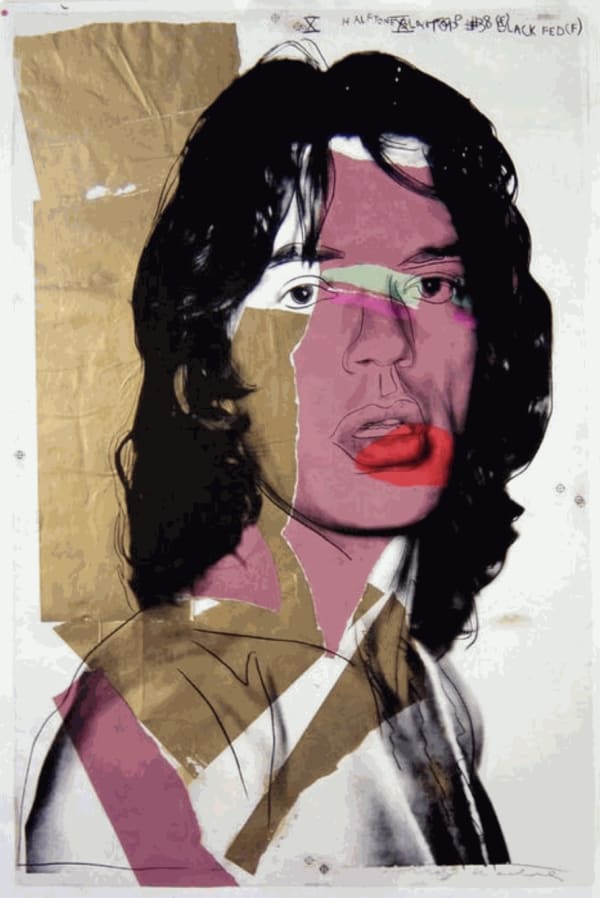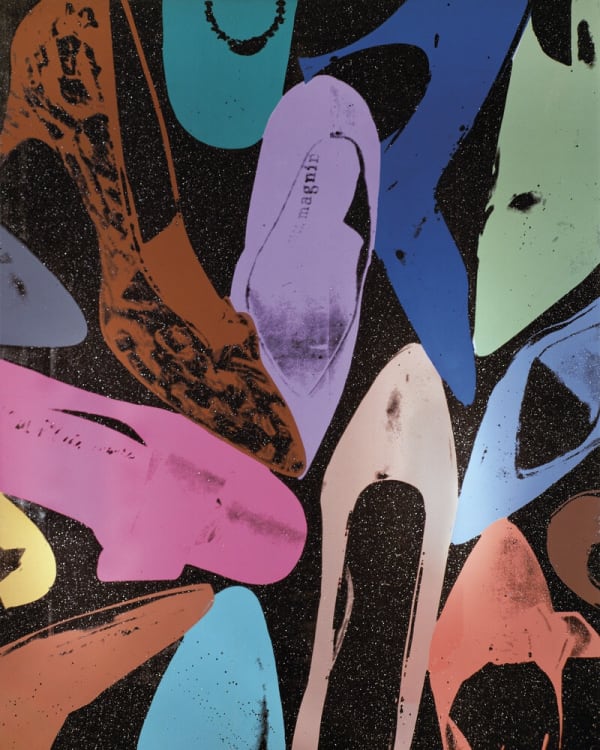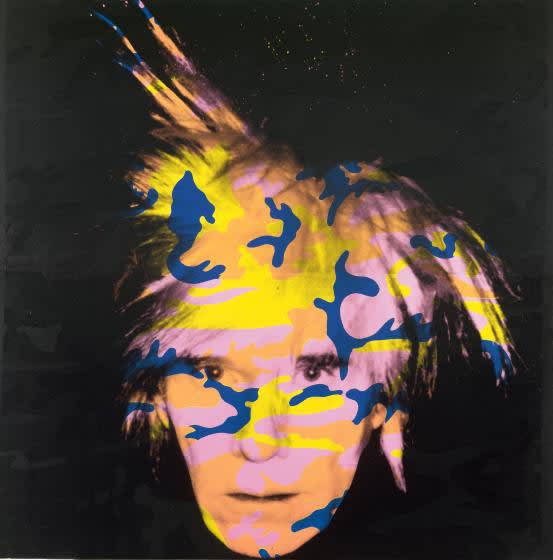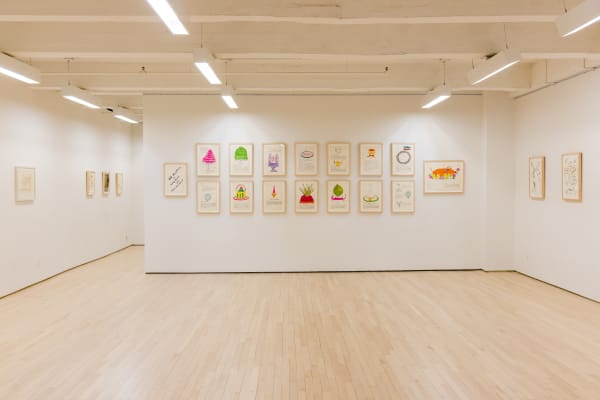-
Overview
"In the future, everyone will be world-famous for 15 minutes"
More than twenty years after his death, Andy Warhol remains one of the most influential figures in contemporary art and culture. Warhol's life and work inspire creative thinkers worldwide thanks to his enduring imagery, his artfully cultivated celebrity, and the ongoing research of dedicated scholars. His impact as an artist is far deeper and greater than his one prescient observation that "everyone will be world-famous for fifteen minutes." His omnivorous curiosity resulted in an enormous body of work that spanned every available medium and most importantly contributed to the collapse of boundaries between high and low culture.
A skilled social networker, Warhol parlayed his fame, one connection at a time, to the status of a globally recognized brand. Decades before widespread reliance on portable media devices, he documented his daily activities and interactions on his traveling audio tape recorder and beloved Minox 35EL camera. Predating the hyper-personal outlets now provided online, Warhol captured life's every minute detail in all its messy, ordinary glamour and broadcast it through his work, to a wide and receptive audience.
The youngest child of three, Andy was born Andrew Warhola on August 6, 1928, in the working-class neighborhood of Oakland, in Pittsburgh, Pennsylvania. Stricken at an early age with a rare neurological disorder, the young Andy Warhol found solace and escape in the form of popular celebrity magazines and DC comic books, imagery he would return to years later. Predating the multiple silver wigs and deadpan demeanor of later years, Andy experimented with inventing personae during his college years. He signed greeting cards "André", and ultimately dropped the "a" from his last name, shortly after moving to New York and following his graduation with a degree in Pictorial Design from the Carnegie Institute of Technology (now Carnegie Mellon University) in 1949.
Work came quickly to Warhol in New York, a city he made his home and studio for the rest of his life. Within a year of arriving, Warhol garnered top assignments as a commercial artist for a variety of clients including Columbia Records, Glamour magazine, Harper's Bazaar, NBC, Tiffany & Co., Vogue, and others. He also designed fetching window displays for Bonwit Teller and I. Miller department stores. After establishing himself as an acclaimed graphic artist, Warhol turned to painting and drawing in the 1950s, and in 1952 he had his first solo exhibition at the Hugo Gallery, with Fifteen Drawings Based on the Writings of Truman Capote. As he matured, his paintings incorporated photo-based techniques he developed as a commercial illustrator. The Museum of Modern Art (among others) took notice, and in 1956 the institution included his work in his first group show.
The turbulent 1960s ignited an impressive and wildly prolific time in Warhol's life. It is this period, extending into the early 1970s, which saw the production of many of Warhol's most iconic works. Building on the emerging movement of Pop Art, wherein artists used everyday consumer objects as subjects, Warhol started painting readily found, mass-produced objects, drawing on his extensive advertising background. When asked about the impulse to paint Campbell's soup cans, Warhol replied, "I wanted to paint nothing. I was looking for something that was the essence of nothing, and that was it". The humble soup cans would soon take their place among the Marilyn Monroes, Dollar Signs, Disasters, and Coca Cola Bottles as essential, exemplary works of contemporary art.
Operating out of a silver-painted and foil-draped studio nicknamed The Factory, located at 231 East 47th Street, (his second studio space to hold that title), Warhol embraced work in film and video. He made his first films with a newly purchased Bolex camera in 1963 and began experimenting with video as early as 1965. Now considered avant-garde cinema classics, Warhol's early films include Sleep (1963), Blow Job (1964), Empire (1963), and Kiss (1963-64). With sold out screenings in New York, Los Angeles, and Cannes, the split-screen, pseudo-documentary Chelsea Girls (1966) brought new attention to Warhol from the film world. Art critic David Bourdon wrote, "word around town was underground cinema had finally found its Sound of Music in Chelsea Girls." Warhol would make nearly 600 films and nearly 2500 videos. Among these are the 500, 4-minute films that comprise Warhol's Screen Tests, which feature unflinching portraits of friends, associates, and visitors to the Factory, all deemed by Warhol to be in possession of "star quality".
Despite a brief self-declared retirement from painting following an exhibition of Flowers in Paris, Warhol continued to make sculptures (including the well known screen-printed boxes with the logos of Brillo and Heinz Ketchup) prints, and films. During this time he also expanded his interests into the realm of performance and music, producing the traveling multi-media spectacle, The Exploding Plastic Inevitable, with the Velvet Underground and Nico. In 1968 Warhol suffered a nearly fatal gunshot wound from aspiring playwright and radical feminist author, Valerie Solanas. The shooting, which occurred in the entrance of the Factory, forever changed Warhol. Some point to the shock of this event as a factor in his further embrace of an increasingly distant persona. The brush with death along with mounting pressure from the Internal Revenue Service (stemming from his critical stance against President Richard Nixon), seem to have prompted Warhol to document his life to an ever more obsessive degree. He would dictate every activity, including noting the most minor expenses and employ interns and assistants to transcribe the content of what would amount to over 3,400 audio tapes. Portions of these accounts were published posthumously in 1987 as The Warhol Diaries.
The traumatic attempt on his life did not, however, slow down his output or his cunning ability to seamlessly infiltrate the worlds of fashion, music, media, and celebrity. Andy Warhol paintings soon intersected with all aspects of popular culture, in some cases long before it would become truly popular. He co-founded Interview Magazine; appeared on television in a memorable episode of The Love Boat; painted an early computer portrait of singer Debbie Harry; designed Grammy-winning record covers for The Rolling Stones; signed with a modeling agency; contributed short films to Saturday Night Live; and produced Andy Warhol's Fifteen Minutes and Andy Warhol's TV, his own television programs for MTV and cable access. He also developed a strong business in commissioned portraits, becoming highly sought after for his brilliantly-colored paintings of politicians, entertainers, sports figures, writers, debutantes and heads of state. His paintings, prints, photographs, and drawings of this time include the important series, Skulls, Guns, Camouflage, Mao, and The Last Supper.
While in Milan, attending the opening of the exhibition of The Last Supper paintings, Warhol complained of severe pain in his right side. After delaying a hospital visit, he was eventually convinced by his doctors to check into New York Hospital for gall bladder surgery. On February 22, 1987, while in recovery from this routine operation, Andy Warhol died. Following burial in Pittsburgh, thousands of mourners paid their respects at a memorial service held at Manhattan's St. Patrick's Cathedral. The service was attended by numerous associates and admirers including artists Roy Lichtenstein, Keith Haring, and entertainer Liza Minnelli. Readings were contributed by Yoko Ono and Factory collaborator and close friend, Brigid Berlin.
-
Series
-
All
-
25 Cats Named Sam
-
A Gold Book
-
A La Recherche Du Shoe Perdu
-
Ads
-
Alexander the great
-
Beethoven
-
Birth of Venus
-
Camouflage
-
Campbell's Soup Box
-
Campbell's Soup Can on a Shopping Bag
-
Campbell's Soup I
-
Campbell’s Soup II
-
Cow Wallpaper
-
Cow Wallpapers
-
Cowboys and Indians
-
Details Of Renaissance Paintings
-
Diamond Dust Shoes
-
Dollar Signs
-
Electric Chair
-
Electric Chairs
-
Endangered Species
-
Flash
-
flower paintings
-
Flowers
-
Gems
-
Grapes
-
Ingrid Bergman
-
Jackie Kennedy
-
Joseph Beuys
-
Kiku
-
Ladies and Gentlemen
-
Late Paintings
-
Lenin
-
Love
-
Mao
-
Marilyn
-
Mick Jagger
-
Moonwalk
-
Muhammad Ali
-
Myths
-
Prints
-
Reigning Queens
-
Shadows
-
Skull
-
Space Fruit
-
Sunset
-
Ten Portraits Of Jews Of The Twentieth Century
-
The Wonderful World Of Fleming Joffe
-
Toy Paintings
-
Trucks
-
Unpublished Prints
-
Wild Raspberries
News-

Andy Warhol
Reigning Queens: Queen Elizabeth II April 30, 2024Andy Warhol's Queen Elizabeth II portraits are comprised of four screenprints published in 1985. The works stand as a testament to the enduring allure of...Read more -

Andy Warhol
The Moonwalk Series April 29, 2024ANDY WARHOL UNVEILED HIS MOONWALK SERIES IN 1987. IT IS A COLLECTION THAT IMMORTALIZES ONE OF HUMANITY'S MOST REMARKABLE ACHIEVEMENTS: THE APOLLO 11 MOON LANDING...Read more -

Auction Top 10 from Print Sales
April 18, 2024Yesterday's auction spectacle showcased an array of captivating works, with pieces by iconic artists such as Warhol, Lichtenstein, and Basquiat taking center stage. From Warhol's...Read more -

Andy Warhol: The Birth of Venus Portfolio
Details of the Renaissance April 9, 2024Renowned for his revolutionary approach to art, Andy Warhol's legacy transcends mere celebrity portraits and cultural commentary. In 1984, Warhol redirected his gaze towards the...Read more -

Andy Warhol
The Beethoven Series April 9, 2024Within the world of contemporary art, Andy Warhol is a renowned figure known for his innovative approach to subject matter. While Warhol is often associated...Read more -

Andy Warhol
À La Recherche Du Shoe Perdu April 9, 2024Andy Warhol intricately wove together elements of celebrity, fashion, and everyday objects in his early series À La Recherche Du Shoe Perdu. Among his captivating...Read more -

Andy Warhol A Gold Book
A Glimpse Into Warhol's Early Career April 9, 2024Andy Warhol , a pioneer of the Pop Art movement, is renowned for his bold and revolutionary approach to art. Yet, before he became synonymous...Read more -

Andy Warhol
Ladies and Gentlemen April 8, 2024In the dynamic cultural landscape of the 1970s, Andy Warhol embarked on an artistic endeavor commissioned by Italian art dealer Luciano Anselmino. Anselmino's envisioned 'impersonal,...Read more -

Andy Warhol's Electric Chair
Death and Disaster April 8, 2024Andy Warhol began the Electric Chair series in 1964, it quickly emerged as a striking testament to his artistic innovation and social commentary. Departing from...Read more -

Andy Warhol
Flash - November 22, 1963 Series April 8, 2024Andy Warhol's Flash portfolio is a captivating exploration of one of the most significant events in modern American history: the assassination of President John F....Read more -

Andy Warhol
The Complete Mick Jagger Portfolio April 2, 2024Andy Warhol's artistic prowess and fascination with celebrity culture are epitomized in his Mick Jagger Complete Portfolio, a series of ten screenprints published in 1975....Read more -

Andy Warhol's Cow Wallpapers
Rural Imagery Reimagined April 1, 2024Andy Warhol , a central figure in the Pop Art movement of the 20th century, had a unique approach to capturing the essence of American...Read more -

Andy Warhol Myths Series
Characters of Post War America April 1, 2024In 1981, Andy Warhol unveiled his remarkable Myths complete portfolio, a collection of ten screenprints that illuminate some of the most enduring fictional figures of...Read more -

Andy Warhol
Dollar Signs March 25, 2024Andy Warhol's artistic legacy is as multifaceted as it is enduring, encompassing a diverse array of works that challenge conventional notions of art and society....Read more -

Andy Warhol
Sunset Prints March 25, 2024Andy Warhol's Sunset series, is emblematic of his relentless exploration of color and the graphic potential within the image. This series was not merely a...Read more -

Andy Warhol Portraits
Who Was Stephen Sprouse ? March 22, 2024Was there an American fashion designer more precocious than Stephen Sprouse ? He once shared with Interview magazine that he learned sketching by reading Vogue...Read more -

Sotheby's: March Print Auction Top Lots
March 21, 2024Held March 20 at Sotheby's London, the Prints & Multiples sale showcased the best of contemporary and pop printmaking with stellar results for works by...Read more -

Andy Warhol: Highest Selling Paintings at Auction
February 27, 2024Andy Warhol , the iconic figure of the Pop Art movement, continues to captivate audiences and dominate the art market decades after his passing. His...Read more -

Andy Warhol's Campbell's Soup Cans
The Iconic Series February 27, 2024Andy Warhol's Campbell's Soup Cans are among American modern art's most iconic images. Originating as a series of thirty-two canvases in 1962, these representations of...Read more -

Andy Warhol
The Toy Paintings February 22, 2024In 1983, Andy Warhol created the Toy Paintings, a series of unique works blending silkscreen techniques with hand painting, inspired by his collection of favorite...Read more -

Andy Warhol
Brillo Boxes February 20, 2024Andy Warhol introduced the first Brillo Boxes at the Stable Gallery in New York in 1964, initiating his exploration of consumer culture, which had commenced...Read more -

Andy Warhol's Myths
Pop Culture and Commercial Significance February 20, 2024“It’s not what you are that counts, it’s what they think you are.” In creating his Myths series, consisting of ten screen prints adorned with...Read more -

Andy Warhol Flowers
Paintings and Prints February 15, 2024Andy Warhol, a paramount figure in the Pop Art movement, has left an indelible mark on the 20th-century art landscape. Among his diverse and expansive...Read more -

Andy Warhol's 1972 Mao Print Portfolio
The Investment in Iconography February 5, 2024In the annals of 20th-century art, few series have stirred as much interest and controversy as Andy Warhol's Mao print portfolio, created in 1972. This...Read more -

Andy Warhol Printmaking
THE CULT OF CELEBRITY AND THE IMPACT OF ADVERTISING January 30, 2024Andy Warhol , a leading figure in the visual art movement known as Pop Art, was renowned for his innovative and influential work in printmaking....Read more -

Andy Warhol's Endangered Species Print Portfolio
A Vivid Intersection of Art and Conservation January 27, 2024Andy Warhol , a towering figure in the pop art movement, is universally celebrated for his vivid depictions that transformed the landscape of modern art....Read more -

Richard Pettibone
A Pioneer of Appropriation Art January 24, 2024A Pioneer of Appropriation Art In the realm of contemporary art, Richard Pettibone's name stands out as a pioneering figure in the appropriation movement....Read more -

Andy Warhol: Flowers Portfolio
A Departure from Branded Works January 23, 2024While the Flowers today seem emblematic of Warhol iconography, they were at the time of inception a notable departure from images of commercialism (Campbell’s Soup)...Read more -

Andy Warhol's Mick Jagger Print Series
A Fusion of Pop Art and Rock 'n' Roll January 23, 2024In 1975, Andy Warhol , a leading figure in the Pop Art movement, unveiled a series of prints that would become emblematic of his unique...Read more -

2024 Artist Market Predictions
A Look Ahead January 16, 20242024 Artist Market Predictions As the year kicks off, we have put together our artist market predictions for 2024, offering insights into evolving trends and...Read more -

Glittering Consumerism
A Closer Look at Andy Warhol's Diamond Dust Shoes January 7, 2024 Read more -

The Intriguing World of Andy Warhol Camouflage Artworks
Exploring the Fusion of Pop Art and Military Motif January 2, 2024 Read more -

2023 In Review
A Look Back December 29, 2023TO WRAP UP THE YEAR, WE ARE TAKING A LOOK BACK AT OUR TOP 10 BEST SELLING ARTISTS OF THE GALLERY. ANDY WARHOL WARHOL'S ART...Read more
Exhibitions-

Andy Warhol’s Seasonal Salon
100 Works on Paper from the 1950s December 17, 2023 - February 15, 2024In the spirit of the Holiday Season and Warhol’s love for everything festive, we are bringing together 100 of Warhol’s works on paper. From his iconic Wild Raspberries recipe book...Read more -

Andy Warhol
Portraits May 11 - July 11, 2023Guy Hepner is pleased to announce Warhol Portraits, an exhibition devoted exclusively to Andy Warhol's portraits of celebrities, politicians and mythological pop culture icons from the 1960s through the 1980s....Read more
-

